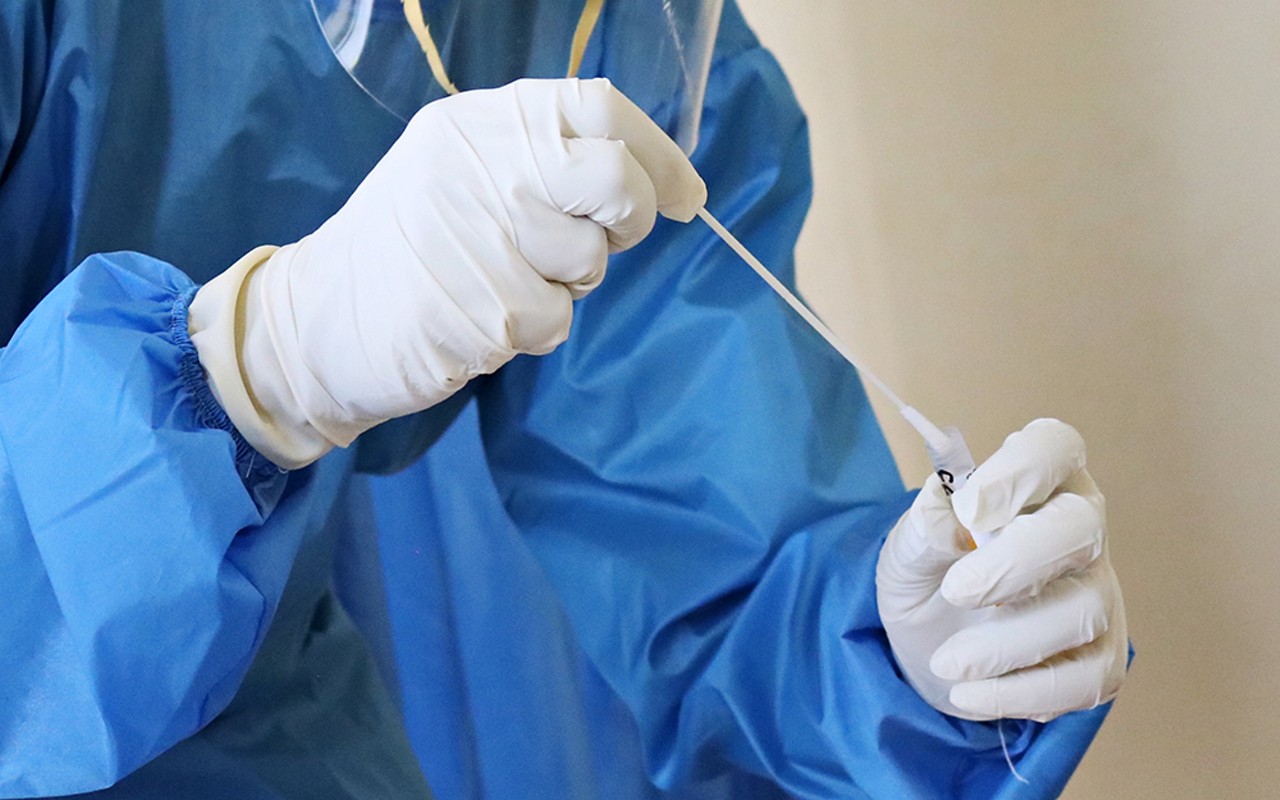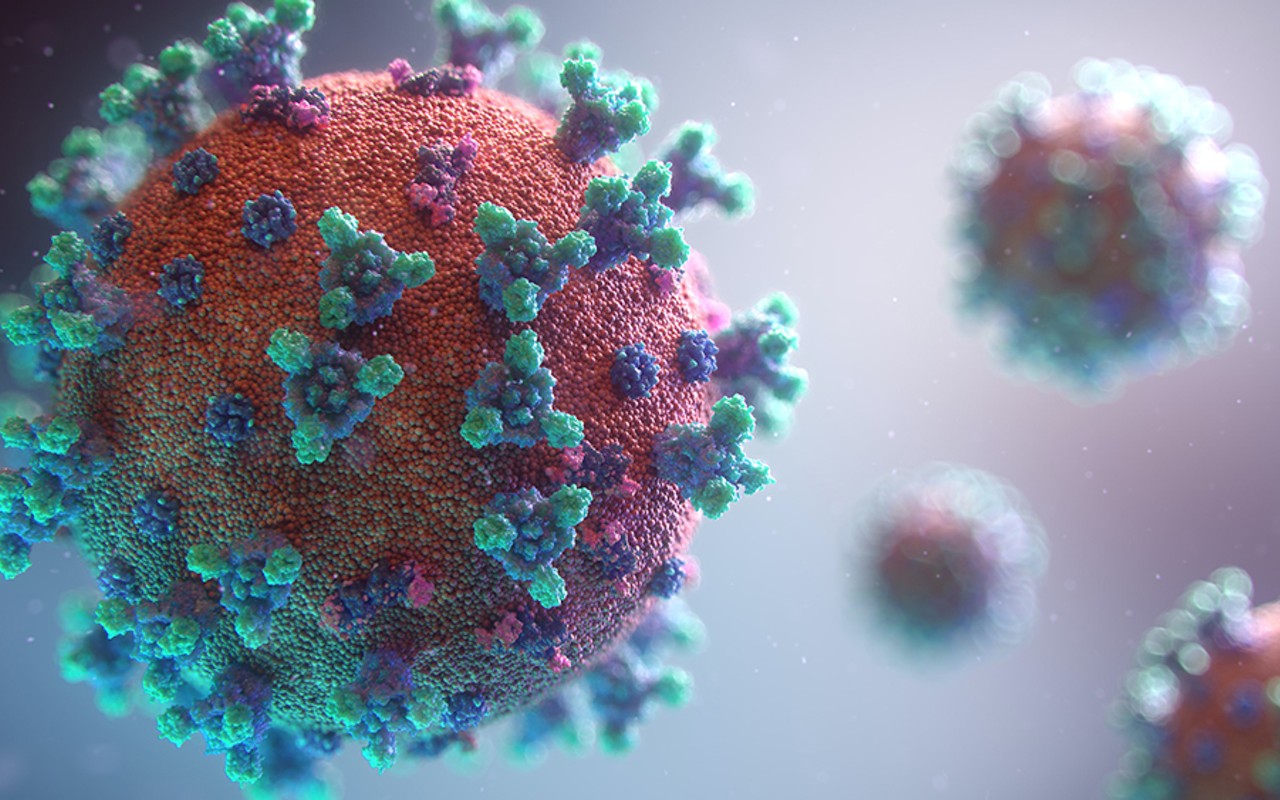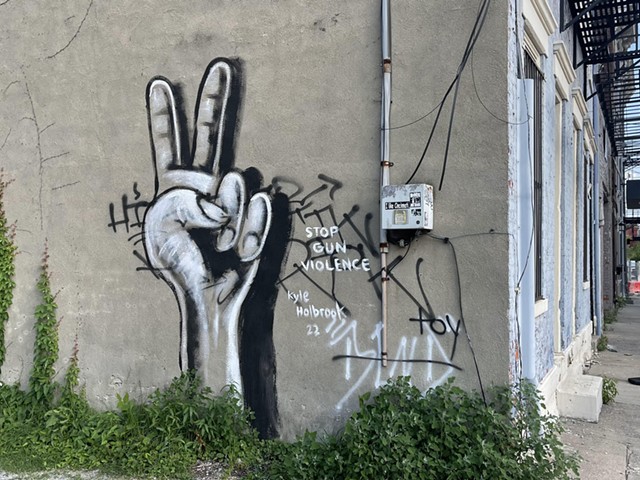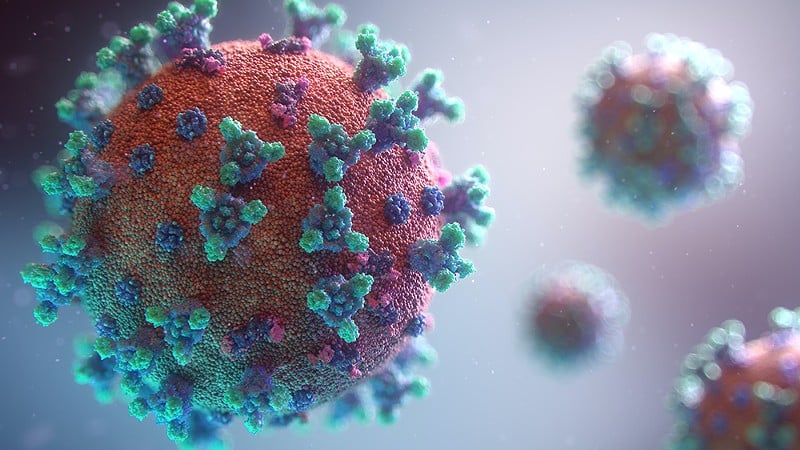
The spread of COVID-19 continues to climb in the Greater Cincinnati area, pushing multiple Cincinnati-area counties to the highest spread level, according to the Centers for Disease Control and Prevention's COVID-19 tracker.
Greater Cincinnati-area counties upgraded to high levels of community spread include Butler, Clermont, Hamilton and Warren counties. Hamilton County was previously bumped up to medium on July 15. Northern Kentucky's Boone and Kenton counties have also been bumped up to high levels of community spread after reaching medium levels earlier in July. Large patches of the United States are experiencing high levels of community spread of the virus.
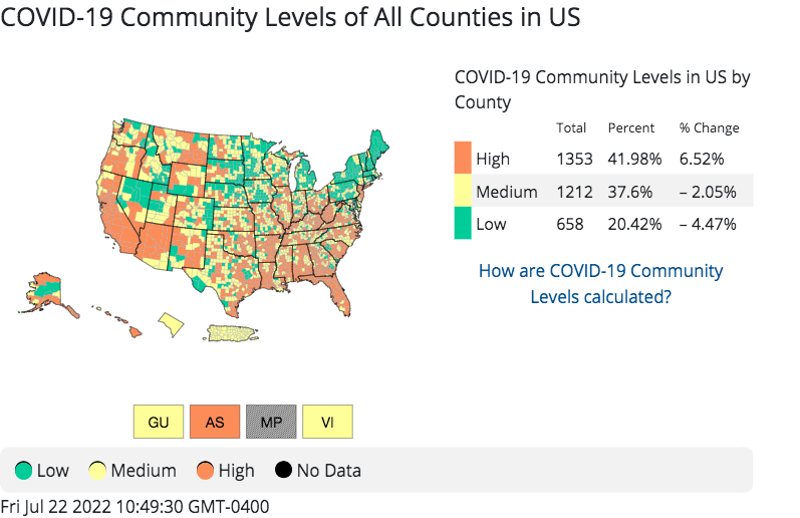
In February, the Centers for Disease Control and Prevention adjusted the way it classifies community spread, which is now based upon full hospital beds, hospital admissions and the total number of new COVID-19 cases in an area.
Recommendations by the CDC for counties with high COVID levels include:
- Wearing a mask indoors in public.
- Staying up to date with COVID-19 vaccines.
- Testing for COVID-19 if you have symptoms
- Speaking to your doctor about additional precautions for people at high risk for severe illness.
As the nation continues to battle the Omicron variant and its many sub-variants, the CDC announced on July 11 a predicted spike in hospitalizations across the country. The agency predicts there will be 3,200 to 13,800 new COVID-19 hospitalizations reported by August 2.
Testing options
Most local and regional health agencies, including the Health Collaborative, provide lists of places where residents can be tested for COVID-19 or pick up a testing kit to use at home.
The CDC advises that those testing positive for COVID-19 or who have COVID-19 symptoms should isolate themselves from others, especially from those who are immunocompromised. Avoiding travel for at least five to 10 full days is recommended, depending on symptoms, severity or setting. People ending isolation should continue to wear a mask for five more days, the CDC says. A tool to help determine how long you need to isolate, quarantine, or take other steps to prevent spreading COVID-19 is available on the CDC's website.
However, many doctors and epidemiologists, including experts at Yale University, caution that the CDC's current guidance for isolation may be too short to stop or slow COVID-19 transmission to others.
U.S. residents, including those in Ohio, can order free at-home COVID-19 tests through a partnership from the federal government and the United States Postal Service.
Vaccine rates and recommendations
As of July 15, about 66% of the total population within the Health Collaborative's 15-county region has started a COVID-19 vaccine series, with 60% having received both shots, according to the Health Collaborative. Only 30% of the population has been boosted.
Scientists have said that getting one of the three COVID-19 vaccination series available in the United States (the two-dose Pfizer, Moderna or Novavax series or the one-shot Johnson & Johnson vaccine) greatly protects people from severe illness and likely hospitalization should they be exposed to the coronavirus, including its variants like Omicron and Delta. Adding a booster provides even more protection against serious health challenges or death, experts say. And though even vaccinated people can still contract COVID-19, they are much less likely to need hospitalization. Most hospitalized COVID patients are unvaccinated, medical staff say.
COVID-19 vaccinations are available to people ages six months and older. In June, the U.S. Food & Drug Administration granted Pfizer and Moderna vaccine series with emergency use authorization for children as young as six months, including for children who already have had COVID-19. Johnson & Johnson and Novavax vaccines have emergency use authorization for people ages 18 and older. See all FDA authorizations and approvals for COVID-19 vaccines in the United States.
Most people are eligible for at least one booster vaccine, and many scientists predict that additional COVID-19 boosters will become necessary as the virus continues to mutate.
Stay connected with CityBeat. Subscribe to our newsletters, and follow us on Facebook, Instagram, Twitter, Google News, Apple News and Reddit.
Send CityBeat a news or story tip or submit a calendar event.

